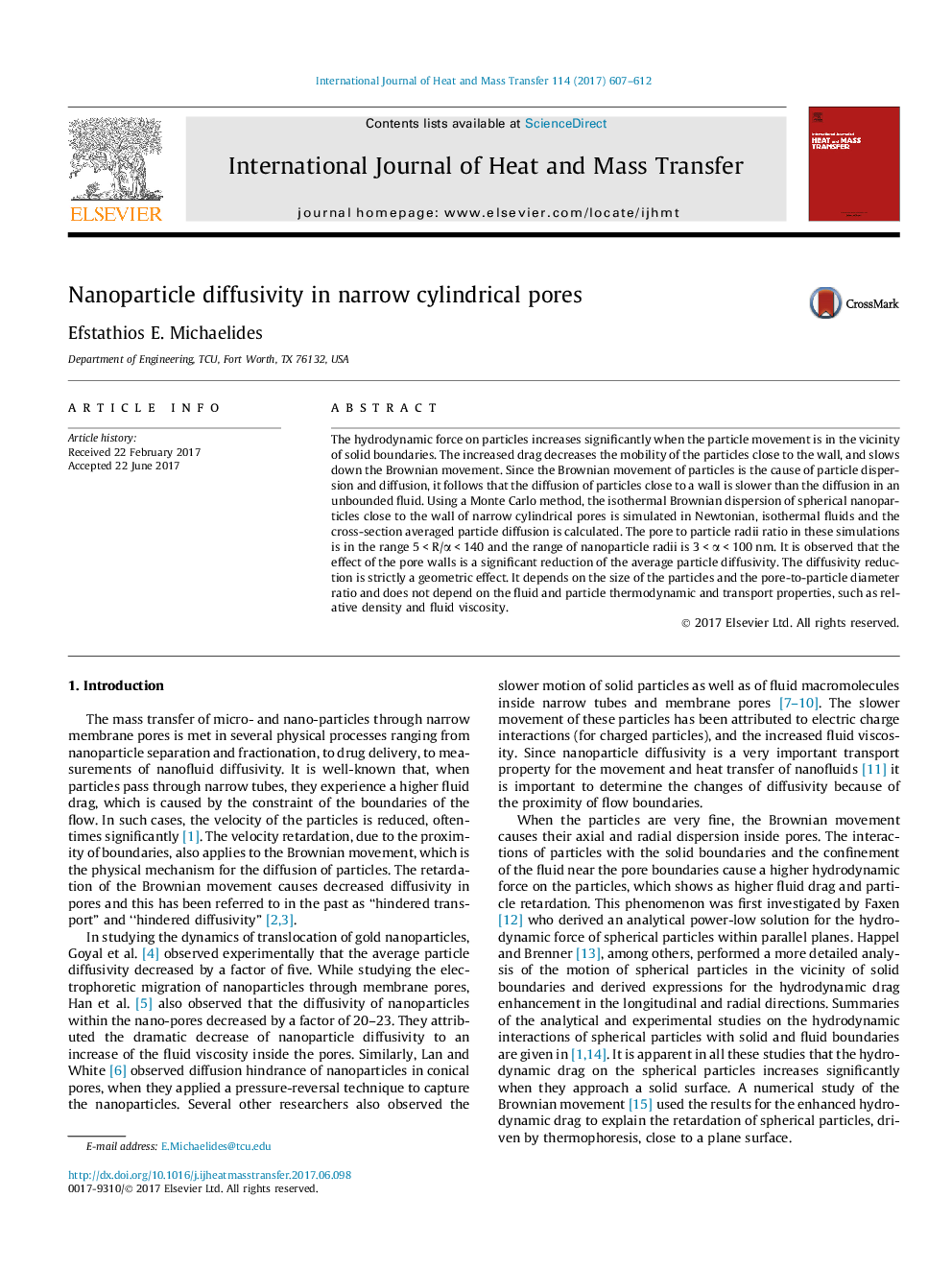| Article ID | Journal | Published Year | Pages | File Type |
|---|---|---|---|---|
| 4993894 | International Journal of Heat and Mass Transfer | 2017 | 6 Pages |
Abstract
The hydrodynamic force on particles increases significantly when the particle movement is in the vicinity of solid boundaries. The increased drag decreases the mobility of the particles close to the wall, and slows down the Brownian movement. Since the Brownian movement of particles is the cause of particle dispersion and diffusion, it follows that the diffusion of particles close to a wall is slower than the diffusion in an unbounded fluid. Using a Monte Carlo method, the isothermal Brownian dispersion of spherical nanoparticles close to the wall of narrow cylindrical pores is simulated in Newtonian, isothermal fluids and the cross-section averaged particle diffusion is calculated. The pore to particle radii ratio in these simulations is in the range 5 < R/α < 140 and the range of nanoparticle radii is 3 < α < 100 nm. It is observed that the effect of the pore walls is a significant reduction of the average particle diffusivity. The diffusivity reduction is strictly a geometric effect. It depends on the size of the particles and the pore-to-particle diameter ratio and does not depend on the fluid and particle thermodynamic and transport properties, such as relative density and fluid viscosity.
Related Topics
Physical Sciences and Engineering
Chemical Engineering
Fluid Flow and Transfer Processes
Authors
Efstathios E. Michaelides,
